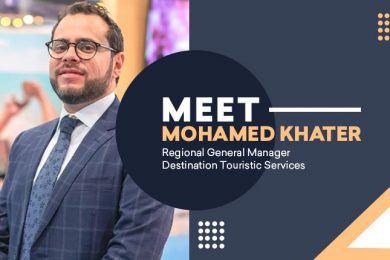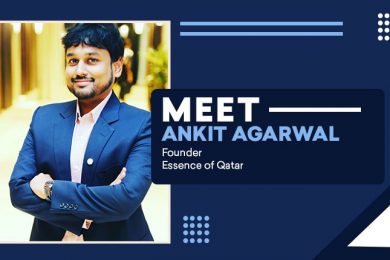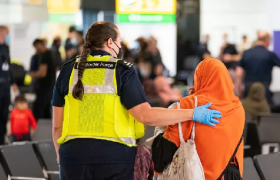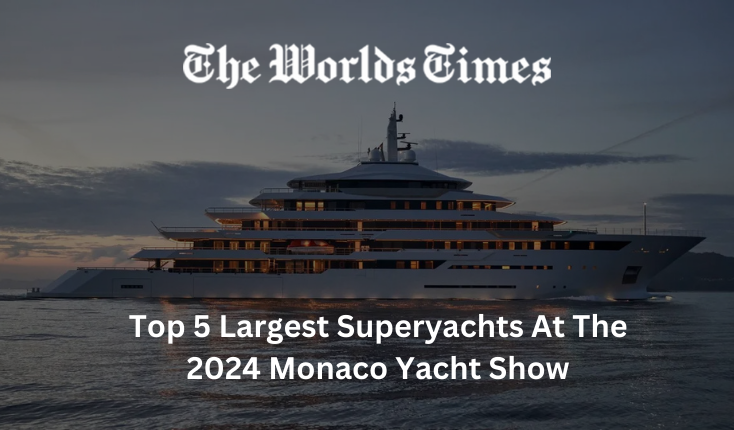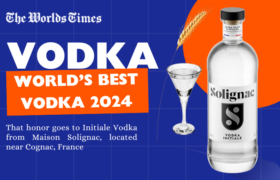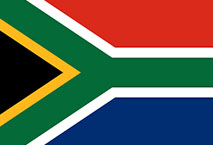H.E. Jamal al-Moosawi Interview
In this question-and-answer session with H.E. Jamal al-Moosawi, we explore the vision, achievements, and future of the National Museum in the Sultanate of Oman. The discussion highlights the Museum’s foundation, inspired by the late Sultan Qaboos bin Said’s vision to preserve Oman’s cultural heritage. From its architectural blend of tradition and modernity to its role in educating and engaging local and international audiences, the Museum has become a beacon of Omani identity. The session also covers the Museum’s significant contributions to cultural diplomacy, educational programs, and international partnerships, positioning it as a leader in preserving and promoting Oman’s rich heritage on a global scale.
The Vision and Foundations
We started the interview by asking, “Can you share the foundational vision that guided its creation and the key factors that influenced the design and implementation of this significant cultural institution?”
H.E. Jamal al-Moosawi replied, “The establishment of the National Museum was inspired by the vision of the late Sultan Qaboos bin Said to establish a cultural landmark that embraces the elements of Omani cultural heritage, both tangible and intangible, from the earliest evidence of human settlement in Oman through to the present day.
The Museum was established by Sultani Decree 62/2013, issued on 16th Muharram, 1435 AH/20th November, 2013 CE), as a legal entity with financial and administrative independence and the capacity to own, manage, and dispose of tangible and intangible assets of Oman`s cultural heritage.
The National Museum’s vision is to bring leadership, inspiration, and innovation to the museums industry in the Sultanate of Oman.
The Museum aims to fulfil its educational, cultural, and humanitarian mission by instilling noble Omani values, fostering a sense of belonging, and enhancing the public awareness of citizens, residents, and visitors regarding Oman and its history, heritage, and culture. Such values are achieved by developing their creative and intellectual abilities, particularly in areas related to the preservation of artefacts and collections, as well as highlighting the Sultanate’s civilizational dimensions through employing and adhering to the best practices and standards in the field of museology.
Situated in a unique location opposite al-Alam Palace in the heart of historic Masqat that represents our beloved national capital, the architectural design of the National Museum embodies a masterful blend of traditional and modern beauty, reflecting the distinctive character for which the Sultanate of Oman is renowned.
In 2020, the National Museum was honoured with several Sultani decrees, most notable of which is the esteemed patronage of His Majesty Sultan Haitham bin Tariq. Additionally, significant personal collections belonging to the late Sultan Qaboos bin Said are exhibited at the National Museum, preserving the enduring legacy of the late Sultan for generations to come.”
Preserving & Promoting Omani Heritage
The Worlds Times: How does the National Museum of Oman contribute to preserving and promoting the country’s rich cultural heritage, and what role does it play in educating both Omani citizens and international visitors about the Sultanate’s history?
H.E. Jamal al-Moosawi replied, “The National Museum plays a significant role in preserving and promoting the rich cultural heritage of the Sultanate of Oman by showcasing archaeological and historical artefacts that, through museum narratives, reflect the story of Oman from the emergence of human presence to the era of Oman’s Renewed Renaissance. The Museum also contributes to educating citizens, residents, and international visitors through educational programmes offered by the Learning Centre. These programmes include lectures and workshops targeting various age groups to expand understanding of Oman’s civilizational dimensions. It enhances cultural awareness through local and international partnerships aiming to highlight Omani identity. Additionally, the Museum organizes internal and external exhibitions that focus on the treasures of Oman’s cultural heritage, embracing cultural diplomacy through initiatives such as “Oman Day” and the “Oman Gallery.”
The National Museum endeavours to employ best practices in museum and collections management, and is committed to enhancing visitors’ experiences through various activities and effective public relations.”
Key Achievements and Future Vision
The Worlds Times: Since its establishment in 2013, what have been the most significant achievements of the National Museum, and how do you envision its evolution in the coming years?
H.E. Jamal al-Moosawi replied, “Since its establishment, the National Museum has achieved numerous accomplishments, including, but not limited to, receiving several awards. These include the Economic Vision Award as the Best Governmental Project in the Sultanate (the sixth cycle of the award) in 2017; the Best Real Estate Project Award from Oman Real Estate Association in 2016; the First Prize for the Best Project Category of Light Effects at the Middle East Lighting Awards; the Silver Award for the best design of fonts within the logo in the Middle East 2017, presented by Transform Awards MENA; and the Bronze Award for Best Visual Identity for Government Institutions in the Middle East 2017, presented by Transform Awards MENA. The Museum was honoured as one of the best service providers in Muscat Governorate in 2023 by Ejada System.
The National Museum endeavours to promote cultural diplomacy with friendly and brotherly nations, and to adopt the best international practices in museology. In the context of “cultural diplomacy” or international cooperation, the National Museum is active in four continents and thirty-six brotherly and friendly countries. The National Museum is involved in numerous Memorandums of Understanding and cooperation agreements with museum institutions that establish the practice of cultural diplomacy. One of the key aspects of cultural diplomacy is the effort to retrieve original Omani treasures preserved abroad wherever they may be found. Additionally, the Museum promotes and markets the cultural components of the Sultanate of Oman in prominent global museums through initiatives such as the “Oman Gallery” and “Oman Day.”
The three marble gravestones, on loan from the Victoria and Albert Museum in London (UK), date back to the Rasulid era and were originally located in a cemetery in the Rabat district of present-day Salalah. The Rasulid sultans established complex administrative systems that supported commerce and trade, including the frankincense trade, enabling Dhofar to flourish for nearly two centuries under their rule.
In recognition of my own efforts to enhance bilateral relations in the fields of culture and museology between the Sultanate of Oman and other countries, I have been honoured to receive several awards, including:
The “Order of Arts and Letters” (Knight Rank) from the French government, represented by the French Ministry of Culture; and the “Order of the Star of Italy” (Knight rank), from President Sergio Mattarella, President of the Italian Republic.
Also, the National Museum has joined the United Nations World Tourism Organization (UNWTO) as an affiliate member. This was announced during the 25th session of the UNWTO General Assembly, held in Uzbekistan from 16th to 20th October, 2024. Accordingly, the National Museum has become the first museum in the Sultanate of Oman to achieve affiliate membership in the UNWTO, reflecting its vision to lead the museum industry in Oman and enhance its role in cultural tourism on a global scale.
The National Museum is undertaking the rehabilitation, preservation, and restoration of several museums and historic houses in the historic city of Masqat. These include Bayt al-Greiza, Bayt Sayyid Nader bin Faisal, Bayt Sayyida Muzna bint Nader, as-Sa’idiyyah School Museum of Education, and the Masqat Gate Museum. Its goal is to provide a cultural experience that reflects the political and social life in Masqat in the early 19th century, while preserving and reinforcing the national identity in the memory of future generations.”
How Technology Improves Engagement and Accessibility
The Worlds Times: The museum employs advanced technologies, such as digital interactive display systems and the Braille system. How do these innovations enhance visitor engagement and accessibility, especially for those with disabilities?
H.E. Jamal al-Moosawi replied, “The National Museum is dedicated to integrating modern technology to enhance visitors’ experiences. It offers thirty-three digital immersive experiences, state-of-the-art conservation facilities, a UHD cinema, and discovery areas for children. It features an integrated infrastructure for special needs and is the first museum in the Middle East to adopt Arabic Braille script for the visually impaired allowing all visitors, including those with disabilities, to interact with and understand the exhibits more deeply, thereby enriching the inclusiveness of its narrative.”
Fostering Omani Heritage and Belonging among Youth
The Worlds Times: Can you elaborate on the educational programmes offered at the Museum’s learning centre and how they aim to cultivate a sense of belonging and appreciation of Omani heritage among younger generations?
H.E. Jamal al-Moosawi replied, “The National Museum is the first museum in Oman to include a Learning Centre, equipped to the highest international standards. It offers a variety of educational programmes aimed at raising public awareness of Omani cultural heritage, inspiring visitors of all ages to engage with Oman’s rich history. The Centre embodies one of the Museum’s main goals; spreading culture in society and preserving the Sultanate’s heritage. It includes several facilities that serve as key resources for educational programmes centred on the Museum’s collections. The Centre aspires to lead Oman’s museum sector in educational and museological practices and to support Oman’s national curriculum by creating links between the curriculum and museum-based educational activities across all levels. Additionally, the Centre provides professional development tools for teachers through workshops and specialized training sessions.
The Centre also offers family-oriented educational activities for various age groups and develops programmes that encourage tourists to deepen their understanding of Oman’s cultural heritage. It collaborates with research institutions locally and internationally to support research-based learning and evaluates the effectiveness of its educational programmes through various assessment methods.
Programmes at the Centre include school visits, which provide services such as guided tours and gallery-related art sessions, a programme for people with disabilities offering activities like guided tours and art sessions, and a summer programme. Other programmes include the Continuing Education Programme, with monthly learning activities for adults such as lectures, workshops, and short courses, and a Family Programme, with weekly art sessions for children visiting the museum with their families during official holidays.”
Shaping the Museum’s Excellence
The Worlds Times: What international best practices and standards have influenced the museum’s operational strategies, and how does the museum ensure that it remains a leader in the museum industry within the Sultanate of Oman?
H.E. Jamal al-Moosawi replied, “The National Museum adheres to best practices and international standards, including the preservation and conservation standards set by organizations such as the International Council of Museums (ICOM). These include the use of appropriate materials, the employment of protective techniques, and the control of environmental factors such as temperature and humidity to prevent artefact deterioration. The museum also promotes community engagement through educational and interactive programmes for visitors of all ages. It is not only a space for displaying artefacts but also a cultural and educational centre.
The museum integrates modern technology, such as interactive screens and virtual tours, to enrich the visitor experience and make the museum accessible to a wider audience. It aims for inclusivity and cultural diversity by highlighting both Omani and international cultural heritage to enhance visitors’ cultural awareness.
To ensure the sustainability of museum practice in Oman, the museum works continuously with global museums and cultural institutions, exchanging expertise, artefacts, and participating in international exhibitions. It regularly updates exhibitions and introduces new educational and cultural programmes to provide refreshed and engaging content for visitors. The museum also uses modern marketing tools to attract local and international visitors, promoting itself as a primary cultural and tourist destination. By involving the local community in cultural and volunteer activities, it strengthens community ties and ensures sustainability. It also supports research on cultural and historical heritage.”
Partnerships Expanding the Museum’s Reach and Exhibits
Lastly we asked, “What collaborations or partnerships has the National Museum pursued with other cultural institutions, both locally and globally, to enhance its exhibits and expand its reach?”
“The National Museum collaborates with local and international institutions on initiatives such as “Oman Day”. In cooperation with the Ministry of Culture, Sports, and Youth, the National Museum inaugurated the “Oman Day” exhibition and activities on Thursday, 11th May, 2023, under the title “Journey to the Land of Frankincense” at the Museum of Fine Arts in Lyon, France. The exhibition, which ran until 10th September, 2023, featured 25 artefacts that provided a visual representation of Oman, its people, and its past and present. It showcased patterns of life in the country and expressed the cultural qualities for which Oman is renowned, including images of beauty, the culture of scent, as well as the importance of faith, and the pursuit of knowledge.
As part of the “Oman Gallery” initiative, the National Museum inaugurated the “Oman Gallery” at the Nairobi National Museum in Kenya. This gallery highlights the shared historical and cultural heritage between Oman and Kenya, and runs from 20th March, 2023, to 27th May, 2028.
The “Oman Corner” initiative was launched as part of the Museum’s goals outlined in Sultani Decree No. 62/2013, issued on 20th November, 2013. This initiative aims to highlight Oman’s unique cultural, historical and scientific heritage to millions of annual visitors to museums in other countries and establish Oman’s reputation as a distinguished cultural tourism destination. It involves the signing of medium-term, renewable agreements with prominent international museums for the loan of collections from the Museum, to be dedicated in exhibition galleries or corners within their permanent Museum narratives, branded as “Oman.”
The Museum also collaborates with the Louvre Abu Dhabi, which was founded in 2017, when a selection of Omani artefacts was loaned to showcase Oman’s heritage along with the frankincense land civilization and Oman’s civilizational role of the Maritime Silk Route. The latest artefacts showcased in the National Museum include two distinctive artworks loaned for a year from Louvre Abu Dhabi, which are a two-toned engraved bowl decorated with beautiful Arabic calligraphy, and an abstract artwork titled “Al-Wala’ lil-Murabba’” (“Loyalty to the Square”), reflecting contemporary abstract art.
The National Museum is partnered with the Smithsonian Institution, a major cultural and research centre in the United States, to present a series of lectures on museum management and international artefact loan practices for Omani museum professionals, researchers, and higher education students.
To promote institutional partnership principles, the National Museum recently signed a cooperation agreement with the Oman Thakira Centre (the Oman Memory Centre), to exchange expertise, consultations, programmes and events in order both to showcase Oman’s cultural heritage and to preserve its intellectual creations and achievements.” H.E. Jamal al-Moosawi Concluded
Visit National Museum to learn more about it
Also Read:
Caroline Fabre’s Journey and FOXMEDIA’s Evolution as a Global Leader
Miha Berčič Interview: From Survival to Business Resilience
Read Sophy Protonotariou Interview, Creative Brilliance






